Search Perspectives
Filter By:
Displaying 1 - 15 of 15 results
-

Lead in Private Well Water and its Impacts on Children's Health
There is no safe level of lead. Lead can be present in drinking water without any noticeable changes in color or odor. It is the responsibility of private well owners to test their water for lead and to take appropriate measures to mitigate exposure.
- Date:
- By: Sara Eaves
-

Supporting the Cancer Moonshot Effort at EPA
I learned that one of the best ways to fight cancer is to prevent it from occurring in the first place. EPA supports the Cancer Moonshot effort by understanding and preventing toxic and environmental exposures and preventing more cancers before they start.
- Date:
- By: Danelle Lobdell
-

Kicking off 2024 With Twin Birthdays and Reasons to be Thankful
A toxicologist with the Safer Choice program finds a label in the place she needed it the most.
- Date:
- By: Lauren Duffy
-
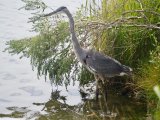
Gaining Perspective on Estuaries
Take a deep dive into the importance of shallow estuaries and the work of the National Estuary Program.
- Date:
- By: Jake Krauss
-

A Silver Anniversary for the Gold Standard in Children's Environmental Health Protection
An overview of the work of PEHSUs, a network of pediatricians, nurses, health educators and other health professionals with special expertise in the prevention, diagnosis, management, and treatment of health issues that arise from environmental exposures.
- Date:
- By: Janet McCabe
-
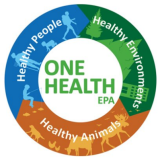
Leading One Health at EPA
We recognize the interdependence of the health of humans, animals, and the environment. When EPA protects the environment (air, water, and soil), EPA is protecting humans, animals, crops, and ecosystems.
- Date:
- By: Dr. Tonya Nichols
-
Refreshing EPA’s Corvallis, Oregon Laboratory Facilities
By the end of our six year renovation project we overhauled and created 26 new labs and 69 new workstations and offices.
- Date:
- By: Alan Thornhill, Ph.D.
-

Exploring Environmental Health Data Using An Interactive Data Visualization Application
Data visualization tools or apps help to visually display many years of information using more than just a static map, scatter plot or table.
- Date:
- By: Dr. Sala N. Senkayi
-
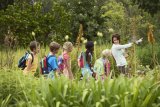
Protecting Children from Extreme Heat
With the arrival of long summer days spent outdoors in the heat, it is more important than ever to pay attention to extreme heat and children’s health.
- Date:
- By: Grace Robiou
-

Inspiring Students to Tackle Environmental Challenges
Each change in habit, no matter how small, can make an impact. I wanted to make sure that our visit left an impression and helped encourage lasting change in the Earth’s youngest environmentalists.
- Date:
- By: KC Becker
-

How's Your School's Air Quality?
As teachers, staff, and students all get ready to head back to the classroom, it’s also important to ensure that our schools welcome these important people back into a healthy learning environment.
- Date:
- By: Jeanne Briskin
-

Participatory Science: Supporting Inclusive Public Engagement in Science at EPA
We believe that providing communities equitable access to participate in and lead scientific projects is key to our shared vision of public engagement in science.
- Date:
- By: Maureen Gwinn
-
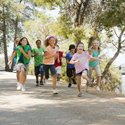
Celebrating 25 Years of Protecting Children’s Health
Protecting children now ensures that we protect future generations. After all, kids comprise nearly a quarter of the U.S. population, but they are 100% of the nation’s future – and many environmental exposures in childhood can have lifelong health impacts.
- Date:
- By: Jeanne Briskin
-

Women’s History Month: Women of Today Working Toward a Better Tomorrow
At EPA, women are working every day to secure a more sustainable, more equitable environment that will support future generations for years to come.
- Date:
- By: Janet McCabe
-
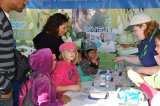
Why Representation Matters for Girls and Women in STEM
As we celebrate International Day of Women and Girls in Science, I’m happy to see that things have come a long way since Marie Curie first began her research. I’m also pleased to see that women are being recognized for their contributions in the sciences.
- Date:
- By: Maureen Gwinn

